Cannabis News
Why Cannabis Isn’t Enough – The Plant Is Many Things But Not a Cure-All for Life’s Problems
Published
1 year agoon
By
admin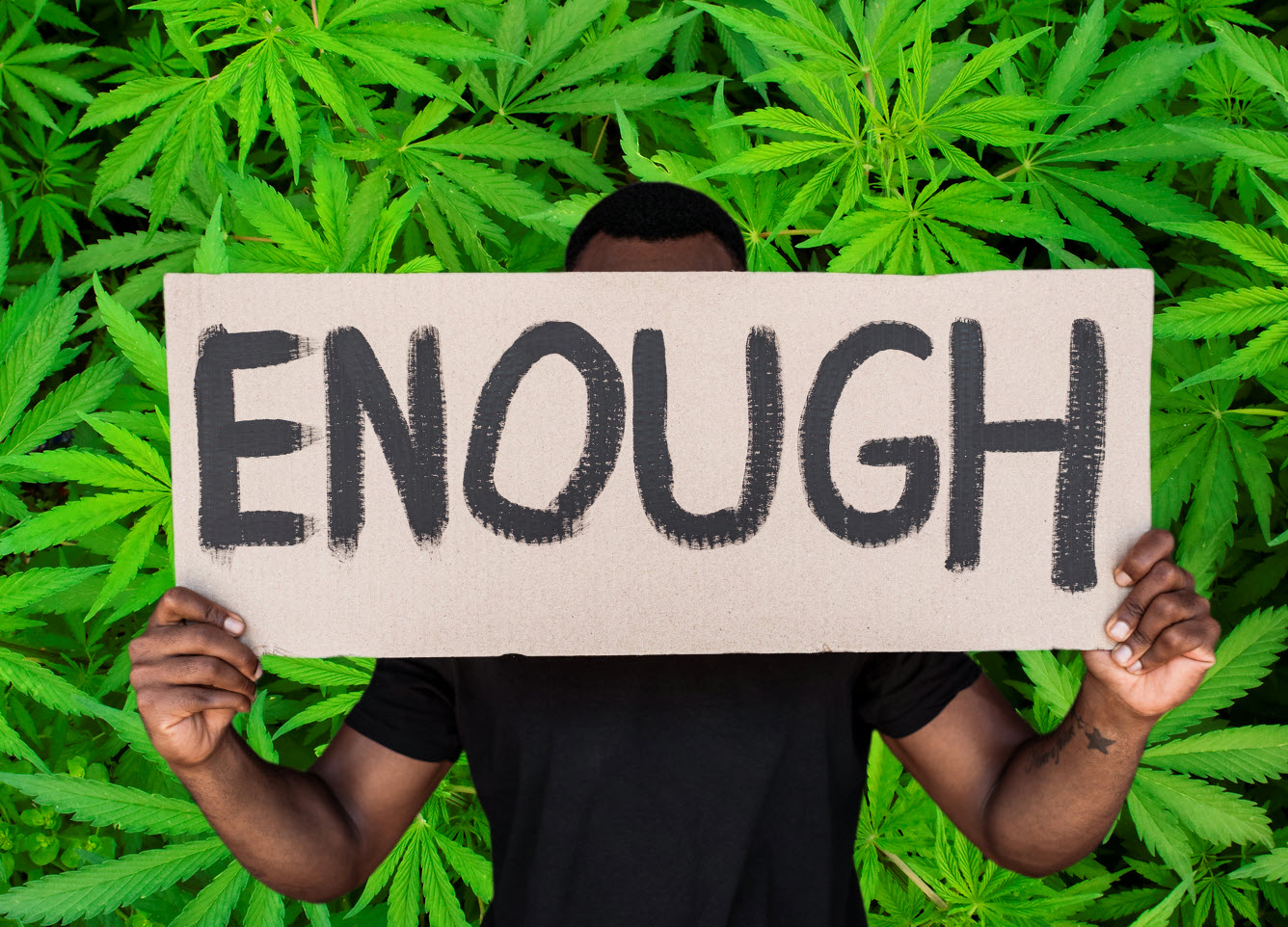
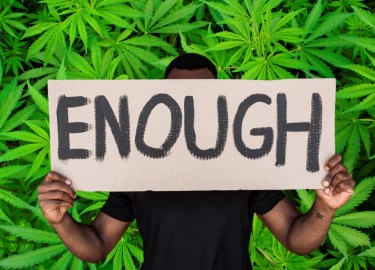
Cannabis has been one of my closest allies for almost 20 years now. We’ve evolved together – from reckless teen getting too high too often, to losing touch in my early 20s, to reconnecting as wiser adults appreciating the medicine in moderation. This plant provides such profound benefits, but also important lessons.
For a long time, weed was my everything. Spiritual exploration, creative inspiration, therapeutic relief – Mary Jane delivered it all. Through bloodshot eyes, life’s problems blurred into chill acceptance. Cannabis alone felt like enough to thrive.
Or so I believed. But as responsibilities grew and society’s pressures mounted in my 30s, cannabis’s limitations became apparent. Because while it can free the mind, weed alone cannot free you from the unavoidable challenges of building a life.
The truth I’ve learned is cannabis acts as a tool and teacher, but not a total cure-all solution. It expands and enlightens, but excess dependence inevitably stagnates motivation and clarity. Pure hedonic escapism loses its luster over time.
Like any medicine, cannabis dosage and integration matter. used excessively without purpose, even joys lose their flavor. But treated as an occasional guide and respite, cannabis enhances the rhythms of sobriety beautifully.
My relationship with cannabis these days focuses on quality over quantity. I integrate respectful weekly rituals, not ceaseless habits. Cannabis enhances activities, it does not occupy them entirely. Moderation allows its magic to endure.
And cannabis no longer serves as my only tool for self-care and inner work. Practices like meditation, breathwork, journaling, and nature immersion now play equal roles maintaining balance. Community and human connection nurture me where THC cannot reach.
Cannabis alone is profoundly amazing, but not enough. Our own growth requires engaging life’s trials fully present. Over-relying on any substance limits potential. But as one color in the paintbox, cannabis invigorates life’s canvas beautifully.
This plant remains one of my closest allies for processing struggles, inspiring ideas, and appreciating the moment. But I’ve outgrown the fantasy of cannabis as a cure-all. Its teaching is to seek fulfillment and purpose beyond transient highs. Those deeper joys cannabis reveals within us await sober embodiment.
So I no longer ask impossible feats of Mary Jane. Our relationship matures into interdependence, not escape. In proper balance, cannabis awakens vital energies that empower me to then thrive soberly. The yin enhances the yang.
At day’s end, inner peace relies not on perfection nor plants. It dwells always within reach by simply opening our eyes to life’s gifts. From that place of gratitude, cannabis can enhance, but never substitute for, the essential human experience. We need only remember that which cannot be bought nor sold.
Taking Full Responsibility!
Cannabis can help process challenges, but relying on it to permanently solve problems or provide happiness often backfires. True empowerment comes from taking absolute responsibility over your internal and external worlds.
It’s easy to blame issues on outside forces – bosses, spouses, society. But playing the victim disempowers you. Everything affecting your reality flows from within, consciously or not. You manifest circumstances through your beliefs.
Stoners often scapegoat weed for demotivation and complacency. But the plant carries no intent – you project meaning onto it. Cannabis just amplifies your pre-existing traits and tendencies. With intention, it can inspire or sedate.
But when life feels directionless, looking inward reveals the honest reason. Your circumstances reflect inner work still required, not external parties preventing your dreams. For change to manifest, you must radically own your role.
This means identifying areas of avoidance and taking accountability. Stop waiting for solutions to arrive from outside. You already possess every resource required for the life you envision – but activation starts from within.
Owning your power completely liberates because you cease seeking completion externally. You become source, not victim. But this freedom is unavailable unless you claim authority over all you perceive.
When cannabis seems to demotivate, embrace sobriety for perspective. Examine whether you’ve given power away by idealizing a substance over inner potential. Everything you need resides inside, but distortions arise when fixating on externals.
Don’t avoid necessary lessons expecting Mary Jane to magically transform life alone. Strong foundations arise from integrating shadow. But you must take responsibility, not avoid reflections cannabis reveals about your psyche.
This personal accountability is challenging but incredibly empowering. You break free from victimhood when taking radical ownership of all circumstances, positive and negative. Wherever you are right now is the result of past consciousness. The present moment births the future.
None of this denies practical challenges exist externally. But you can only ever change reality by changing your inner state. When life feels overwhelming, lean into cannabis for insight – then act from renewed inner power with unflinching responsibility. No more blaming outside forces.
Owning your sovereign creatorship lets you consciously reshape each moment instead of feeling trapped. But manifesting requires brave self-examination, not blind avoidance. Everything wished away in clouds of smoke eventually demands sober reckoning. The difference is doing so from empowerment, not weakness.
Cannabis can inspire this inner reflection when used consciously. But lasting growth requires embracing sobriety and absolute responsibility with clear eyes, not foggy escapism. Stop limiting yourself by giving away power. The life you want awaits activation from within.
Recognizing Cannabis’ Place
Recognizing What Cannabis Is
Cannabis is an incredible plant, but making it the centerpiece of life leads to overdependence. The healthiest view understands cannabis as a multifaceted tool that can enhance activities, not replace them. It accompanies but is not the destination.
A good analogy is to a hammer. As useful as that tool is, you wouldn’t elevate it to some holy grail. It remains just one implement among many for specific jobs. Cannabis plays roles, but isn’t a panacea.
This plant acts as a lever that can amplify inherent qualities. Used consciously, it enhances whatever you direct its power towards. But unchecked, it turns defects up to 11 too. The key is intention.
Cannabis provides no healing itself – it simply assists your innate healing abilities. Any lasting benefits arise from the changes and insights you integrate afterwards. Don’t forfeit agency to a substance.
Like any tool, its purpose depends on the craftsman. An artist may use cannabis as creative inspiration, while a relapser uses it towards stagnation. The plant has no motive – you reveal your subconscious through how it’s applied.
It can spice up entertainment but cannot replace lacking fulfillment or excitement in your sober life. Smoking to amuse yourself when nothing else engages indicates an unmet need for stimulation.
Cannabis induces spiritual feelings but is not inherently spiritual itself. Those flavors emerge from your unique personality interacting with the plant. Enlightenment comes from within, not from matertials.
Full appreciation means acknowledging cannabis as ally on your journey, not the journey itself. Dependence on any external forces hinders personal growth. But integrated as occasional fuel along your path, cannabis can get you far.
When you forget it’s just a tool, the tendency to overuse and avoid sobriety creeps in. Assigning mystical traits to cannabis often means not examining why you feel unable to cope without it.
But by recognizing its complimentary nature, cannabis finds its rightful place in your toolkit. Use it strategically to facilitate specific activities instead of chronically staying high.
This prevents making an idol of cannabis that restricts instead of elevates life. The difference lies in understanding it has no intrinsic healing properties itself outside of your engagement. Cannabis creates nothing – you manifest meaning through it.
The most skillful craftsmen view their tools thoughtfully. They select the best instruments for defined purposes and maintain mastery over implementation. Cannabis enhances many trades when respected as such.
So harness this ally wisely and cannabis will return exponential value. But making it the cornerstone of existence strips away its joy. The healthiest relationships maintain power over their tools, not become subject to them. Keep perspective.
The Sticky Bottom Line
At the end of the day, life is infinitely complex. Having any single focus become the sole source of pleasure, relief, or meaning leaves you vulnerable. Relying on one thing for everything inevitably limits possibilities.
The many challenges adulthood brings require an ever-expanding toolkit. What sufficed in youth no longer nurtures decades later. Grow or stagnate – evolution gives no other choice.
This journey has taught me cannabis alone could never fulfill every need. It remains a beloved companion, but fulfillment weathers all seasons through intimacy with oneself and others. This is the tricky work, not boyish escapism.
My intent here was to help fellow lifelong cannabis enthusiasts mature in their relationship with the plant. Let its magic endure by giving it space rather than making it your everything.
Cannabis is best honored through mindful moderation and openness to other practices. Integrate respectful rituals without obsession. Let it enhance natural joys rather than replace them.
Approached thus, cannabis stays a trusted ally for decades without dulling motivation or joy. The key is balance, wisdom, and understanding it is but one of life’s delightful flavors, not the whole feast.
Over 20 years deep, my dance with cannabis continues better than ever. But now, our rapport is an interdependence nurturing my sobriety and community, not avoiding it. This is seasoning, not sustenance.
If new cannabis users embraces this measured ethos, you may blaze calmly and gratefully when you are my age too. There are always higher horizons ahead if you keep perspective. Excess is the only thing that renders poison.
So remember – life’s purpose relies not on any one person, place or plant. Give your power to nothing outside yourself. YOUR inner compass points the only way through the wilderness. With practice, we learn to trust it.
May you never cease evolving in knowledge while retaining beginner’s awe, and enjoy the sticky greens even longer than I! The journey of wisdom is just beginning…
THE PROMISE OF WEED, READ ON…
You may like
-


Latest Trump Weed Rumor – Trump Will Federally Deschedule and Decriminalize Cannabis, but Not Legalize It
-


Webinar Replay: Post-Election Cannabis Wrap – Smoke ’em if You’ve Got ’em
-


I Had Just One Puff
-


Marijuana firms Eaze, Green Dragon find new life after $10 million capital infusion
-
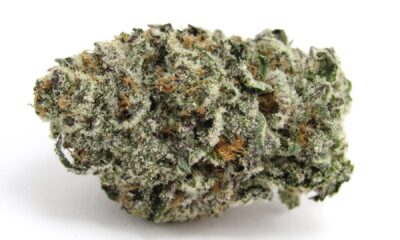

Get some rest on Modified Grapes—November’s Leafly HighLight
-


Is Kratom Addictive? Understanding Dependence, Risks, and Safe Usage
Cannabis News
Latest Trump Weed Rumor – Trump Will Federally Deschedule and Decriminalize Cannabis, but Not Legalize It
Published
11 hours agoon
November 14, 2024By
admin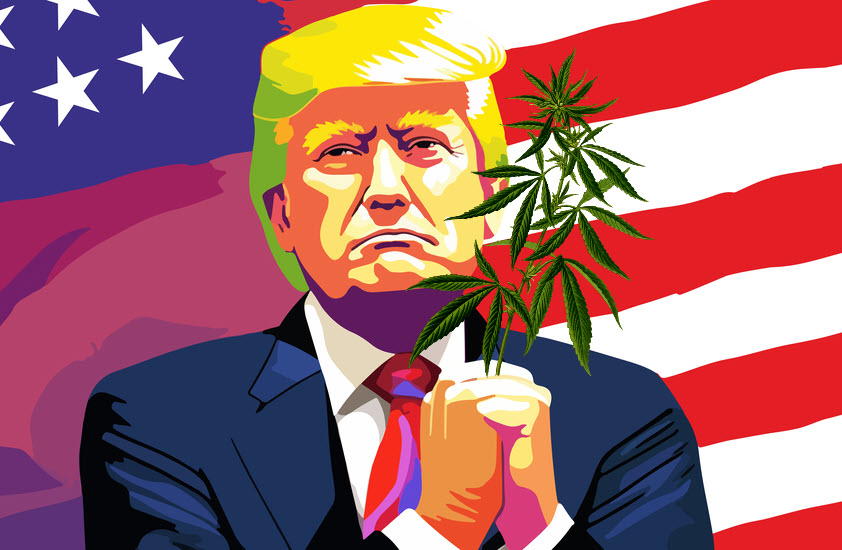
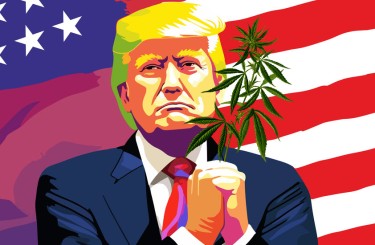
In a recent interview, former New Jersey Governor Chris Christie made headlines by asserting that President-elect Donald Trump will pursue significant reforms in federal policies regarding marijuana and cryptocurrency. As the nation grapples with evolving attitudes toward cannabis and the burgeoning digital currency market, Christie’s predictions have ignited discussions about the potential implications of such changes on both industries. This article delves into Christie’s insights, the current state of marijuana and cryptocurrency regulations, and the broader implications of these anticipated reforms.
The Current Landscape of Marijuana Legislation
Federal vs. State Laws
Marijuana remains classified as a Schedule I substance under the Controlled Substances Act (CSA), which places it in the same category as heroin and LSD. This classification has created a complex legal landscape where states have moved to legalize cannabis for medical and recreational use, while federal law continues to impose strict prohibitions. As of now, over 30 states have legalized marijuana in some form, leading to a burgeoning industry that generates billions in revenue.
Challenges Faced by the Cannabis Industry
Despite its legality in many states, the cannabis industry faces significant hurdles due to federal restrictions. These challenges include:
-
Banking Access: Many banks are hesitant to work with cannabis businesses due to fear of federal repercussions, forcing these businesses to operate largely in cash.
-
Taxation Issues: The IRS enforces Section 280E of the tax code, which prohibits businesses engaged in illegal activities from deducting normal business expenses, leading to disproportionately high tax burdens for cannabis companies.
-
Interstate Commerce: The lack of federal legalization prevents cannabis businesses from operating across state lines, limiting their growth potential.
Chris Christie’s Perspective on Marijuana Reform
Christie, a former presidential candidate known for his tough stance on drugs during his tenure as governor, has evolved his views on marijuana over the years. In his recent statements, he emphasized that Trump is likely to pursue descheduling cannabis, which would remove it from the Schedule I classification. This move would not only provide clarity for businesses operating in legal markets but also open avenues for banking and investment.
Christie highlighted that descheduling would allow for a more regulated market where safety standards could be established, thus protecting consumers. He believes that this approach aligns with a growing consensus among Americans who support legalization and recognize the potential benefits of cannabis use for both medical and recreational purposes.
The Future of Cryptocurrency Regulation = The Rise of Cryptocurrencies
Cryptocurrencies have surged in popularity over the past decade, with Bitcoin leading the charge as the first decentralized digital currency. The market has expanded to include thousands of alternative coins (altcoins), each with unique features and use cases. As cryptocurrencies gain traction among investors and consumers alike, regulatory scrutiny has intensified.
Current Regulatory Challenges
The cryptocurrency market faces several regulatory challenges that hinder its growth and adoption:
-
Lack of Clarity: Regulatory frameworks vary significantly across states and countries, creating confusion for investors and businesses.
-
Fraud and Scams: The rapid growth of cryptocurrencies has led to an increase in fraudulent schemes targeting unsuspecting investors.
-
Consumer Protection: Without clear regulations, consumers are often left vulnerable to risks associated with volatile markets.
Christie’s Vision for Crypto Regulation
Christie believes that under Trump’s leadership, there will be an effort to find a “sweet spot” for cryptocurrency regulation balancing innovation with consumer protection. He argues that overly stringent regulations could stifle growth in this emerging sector while too little oversight could expose consumers to significant risks.
In his view, a balanced regulatory framework would include:
1. Clear Definitions: Establishing clear definitions for different types of cryptocurrencies and tokens to differentiate between securities and utility tokens.
2. Consumer Protections: Implementing measures to protect investors from fraud while promoting transparency within the market.
3. Encouraging Innovation: Creating an environment conducive to innovation by allowing startups to thrive without excessive regulatory burdens.
Christie’s insights reflect a growing recognition among policymakers that cryptocurrencies are here to stay and that appropriate regulations are necessary to foster growth while safeguarding consumers.
Implications of Proposed Reforms
Economic Impact
The potential reforms proposed by Christie could have far-reaching economic implications:
-
Job Creation: Legalizing marijuana at the federal level could lead to significant job creation within the cannabis industry—from cultivation and production to retail sales.
-
Investment Opportunities: Descheduling cannabis would open up investment opportunities for institutional investors who have been hesitant due to federal restrictions.
-
Boosting Local Economies: Legal cannabis markets have proven beneficial for local economies through increased tax revenues and job creation.
Similarly, clear regulations around cryptocurrencies could stimulate investment in blockchain technology and related industries, fostering innovation and economic growth.
Social Justice Considerations
Both marijuana legalization and sensible cryptocurrency regulations have social justice implications:
-
Addressing Past Injustices: Legalizing marijuana could help rectify past injustices related to drug enforcement policies that disproportionately affected marginalized communities.
-
Financial Inclusion: Cryptocurrencies offer opportunities for financial inclusion for those underserved by traditional banking systems, particularly in low-income communities.
Political Landscape
The political landscape surrounding these issues is complex. While there is bipartisan support for marijuana reform among certain lawmakers, challenges remain in overcoming entrenched opposition. Similarly, cryptocurrency regulation has garnered attention from both sides of the aisle but requires collaboration to establish effective frameworks.
Conclusion
Chris Christie’s predictions about President-elect Donald Trump’s approach to federal marijuana descheduling and cryptocurrency regulation suggest a potential shift in U.S. policy that could significantly reshape both industries. As public opinion evolves on these issues, lawmakers have an opportunity to enact meaningful reforms that promote economic growth while ensuring consumer protection. The anticipated changes could foster a more robust cannabis industry that contributes positively to the economy and addresses social justice concerns, while clear regulatory frameworks for cryptocurrencies could encourage innovation and protect consumers in the digital economy. Stakeholders in both sectors are closely watching these developments, eager to see how potential reforms might impact their futures. While the realization of Christie’s predictions remains uncertain, it’s clear that the conversation around marijuana and cryptocurrency regulation is ongoing and far from settled.
TRUMP 2.0 ON CANNABIS REFORM, READ ON…
TRUMP 2.0 ON FEDERAL CANNABIS REFORM – WHAT DO WE KNOW?
Cannabis News
Webinar Replay: Post-Election Cannabis Wrap – Smoke ’em if You’ve Got ’em
Published
1 day agoon
November 13, 2024By
admin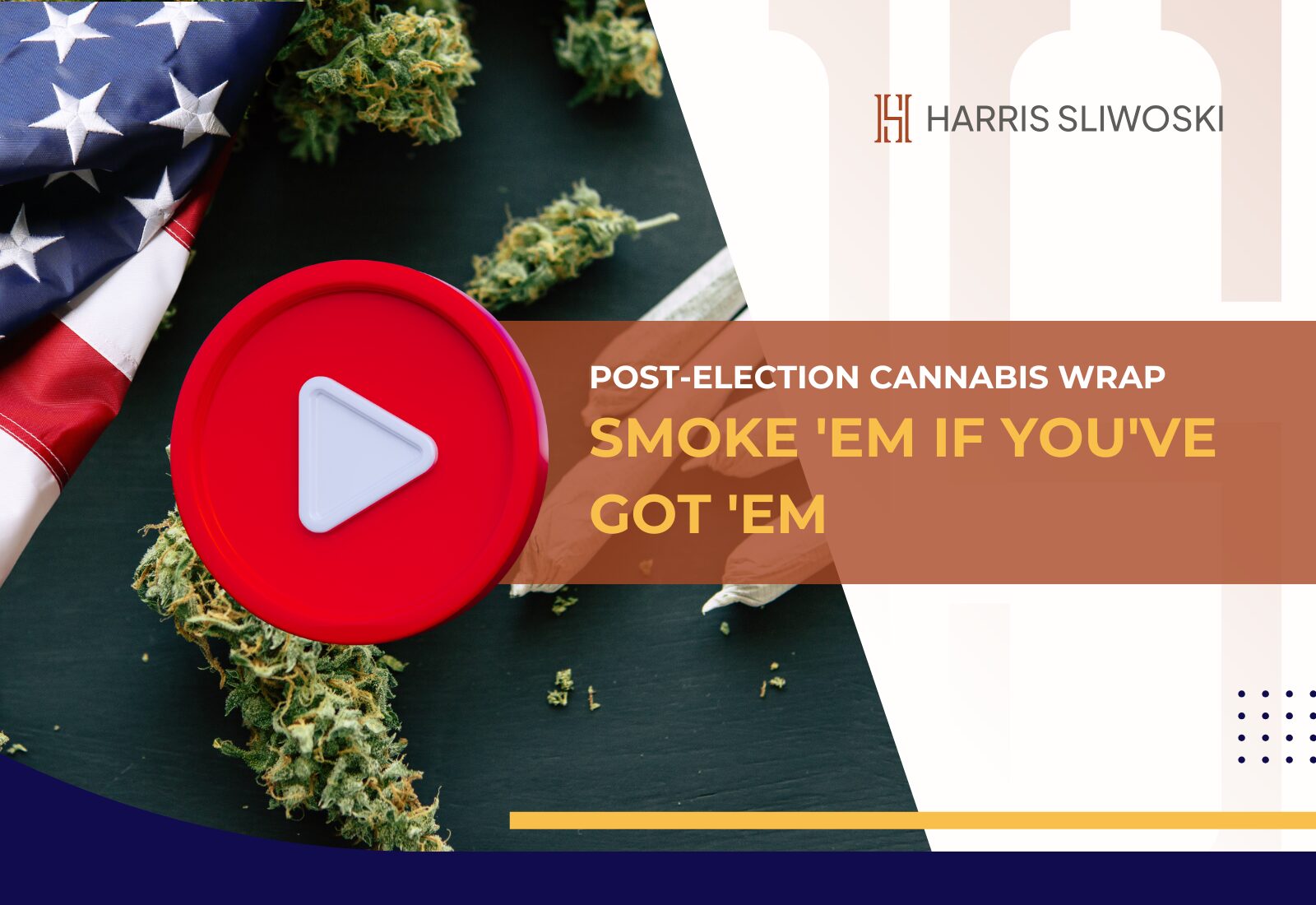
On Thursday, November 7th, Vince Sliwoski, Aaron Pelley and Fred Rocafort held a post election discussion “Post-Election Cannabis Wrap – Smoke ’em if You’ve Got ’em”. Watch the replay!
Key Takeaways from the “Smoke ’em if You’ve Got ’em – 2024 Post Election Cannabis Wrap” Webinar:
- Panelists:
- Vince Sliwoski: Oregon Business lawyer specializing in cannabis and commercial real estate.
- Aaron Pelley: Experienced in cannabis law since Washington’s legalization in 2012.
- Fred Rocafort: Trademark attorney working closely with the cannabis team.
- Election Results Overview:
- Most 2024 cannabis ballot measures did not pass.
- Florida, South Dakota, and North Dakota saw failures.
- Nebraska became the 39th state to legalize cannabis for medical use when it passed two cannabis initiatives, Initiatives 437 and 438.
- Federal and State-Level Developments:
- Medical use is currently legal in 38 states, and 24 states allow recreational use.
- Republican support for marijuana legalization is growing.
- Federal Policy Implications:
- Schedule III Rescheduling: The process to move cannabis to Schedule III is ongoing, which could significantly impact the industry.
- Importance of Federal Appointments: The future of cannabis policy depends heavily on who is appointed to key positions in the administration.
- International and Domestic Trade:
- Schedule III status could ease import/export restrictions on cannabis.
- Unified control of House, Senate, and presidency might expedite legislative progress.
- Economic and Industry Impact:
- Cannabis stocks experienced volatility post-election, reflecting investor uncertainty.
- Federal legalization and banking reforms are crucial for industry stability and growth.
- Future Outlook:
- The potential for federal rescheduling remains strong, with hearings scheduled for early 2025.
- State-level initiatives and regulatory developments will continue to shape the industry.


“How Long Does One Puff of Weed Stay in Your System?”… This topic can be difficult to answer since it is dependent on elements such as the size of the hit and what constitutes a “one hit.” If you take a large bong pull then cough, it might linger in your system for 5-7 days. A moderate dose from a joint can last 3-5 days, whereas a few hits from a vaporizer may last 1-3 days.
The length of time that marijuana stays in the body varies based on a number of factors, including metabolism, THC levels, frequency of use, and hydration.
Delta-9-tetrahydrocannabinol, or THC, is the primary psychoactive component of cannabis. THC and its metabolites, which remain in your body long after the effects have subsided, are detected by drug tests.
Since these metabolites are fat-soluble, they cling to bodily fat molecules. They could thus take a while to fully pass through your system, particularly if your body fat percentage is higher.
THC is absorbed by tissues and organs (including the brain, heart, and fat) and converted by the liver into chemicals such as 11-hydroxy-THC and carboxy-THC. Cannabis is eliminated in feces at a rate of around 65%, while urine accounts for 20%. The leftover amount might be kept within the body.
THC deposited in bodily tissues ultimately re-enters the circulation and is processed by the liver. For frequent users, THC accumulates in fatty tissues quicker than it can be removed, thus it may be detectable in drug tests for days or weeks following consumption.
The detection time varies according to the amount and frequency of cannabis usage. Higher dosages and regular usage result in longer detection times.
The type of drug test also affects detection windows. Blood and saliva tests typically detect cannabis metabolites for shorter periods, while urine and hair samples can reveal use for weeks or even months. In some cases, hair tests have detected cannabis use over 90 days after consumption.
Detection Windows for Various Cannabis Drug Tests
Urine Tests
Among all drug tests, urine testing is the most commonly used method for screening for drug use in an individual.
Detection times vary, but a 2017 review suggests the following windows for cannabis in urine after last use:
– Single-use (e.g., one joint): up to 3 days
– Moderate use (around 4 times a week): 5–7 days
– Chronic use (daily): 10–15 days
– Chronic heavy use (multiple times daily): over 30 days
Blood Tests
Blood tests generally detect recent cannabis use, typically within 2–12 hours after consumption. However, in cases of heavy use, cannabis has been detected up to 30 days later. Chronic heavy use can extend the detection period in the bloodstream.
Saliva Tests
THC can enter saliva through secondhand cannabis smoke, but THC metabolites are only present if you’ve personally smoked or ingested cannabis.
Saliva testing has a short detection window and can sometimes identify cannabis use on the same day. A 2020 review found that THC was detectable in the saliva of frequent users for up to 72 hours after use, and it may remain in saliva longer than in blood following recent use.
In areas where cannabis is illegal, saliva testing is often used for roadside screenings.
Hair Tests
Hair follicle tests can detect cannabis use for up to 90 days. After use, cannabinoids reach the hair follicles through small blood vessels and from sebum and sweat surrounding the hair.
Hair grows at approximately 0.5 inches per month, so a 1.5-inch segment of hair close to the scalp can reveal cannabis use over the past three months.
Factors Affecting THC and Metabolite Retention
The length of time THC and its metabolites stay in your system depends on various factors. Some, like body mass index (BMI) and metabolic rate, relate to individual body processing, not the drug itself.
Other factors are specific to cannabis use, including:
– Dosage: How much you consume
– Frequency: How often you use cannabis
– Method of consumption: Smoking, dabbing, edibles, or sublingual
– THC potency: Higher potency can extend detection time
Higher doses and more frequent use generally extend THC retention. Cannabis consumed orally may remain in the system slightly longer than smoked cannabis, and stronger cannabis strains, higher in THC, may also stay detectable for a longer period.
How Quickly Do the Effects of Cannabis Set In?
When smoking cannabis, effects appear almost immediately, while ingested cannabis may take 1–3 hours to peak.
The psychoactive component THC produces a “high” with common effects such as:
– Altered senses, including perception of time
– Mood changes
– Difficulty with thinking and problem-solving
– Impaired memory
Other short-term effects can include:
– Anxiety and confusion
– Decreased coordination
– Dry mouth and eyes
– Nausea or lightheadedness
– Trouble focusing
– Increased appetite
– Rapid heart rate
– Restlessness and sleepiness
In rare cases, high doses may lead to hallucinations, delusions, or acute psychosis.
Regular cannabis use may have additional mental and physical effects. While research is ongoing, cannabis use may increase the risk of:
– Cognitive issues like memory loss
– Cardiovascular problems including heart disease and stroke
– Respiratory illnesses such as bronchitis or lung infections
– Mood disorders like depression and anxiety
Cannabis use during pregnancy can negatively impact fetal growth and development.
Duration of Effects
Short-term effects generally taper off within 1–3 hours, but for chronic users, some long-term effects may last days, weeks, or even months. Certain effects may even be permanent.
Bottom Line
The amount of time that cannabis remains in your system following a single use varies greatly depending on individual characteristics such as body fat, metabolism, frequency of use, and mode of intake. Frequent users may maintain traces of THC for weeks, whereas infrequent users may test positive for as little as a few days. Hair tests can disclose usage for up to 90 days, while blood and saliva tests identify more recent use. Urine tests are the most popular and have varying detection durations. The duration that THC and its metabolites are detectable will ultimately depend on a number of factors, including dose, strength, and individual body chemistry.
PEE IN A CUP COMING UP, READ ON..

Latest Trump Weed Rumor – Trump Will Federally Deschedule and Decriminalize Cannabis, but Not Legalize It

Webinar Replay: Post-Election Cannabis Wrap – Smoke ’em if You’ve Got ’em

I Had Just One Puff

Marijuana firms Eaze, Green Dragon find new life after $10 million capital infusion

Get some rest on Modified Grapes—November’s Leafly HighLight

Is Kratom Addictive? Understanding Dependence, Risks, and Safe Usage

New Rule, December 5: Oregon Cannabis Retailers, Processors and Labor Peace Agreements

The CBD Dog Treat Guide

Trippin’ Golf Balls – Can Magic Mushrooms Help Your Golf Game?

Australian Broadcasting Corp Alleges Military Veterans Have Been Targeted By Medicinal Cannabis Companies Via Social Media & Offered Free “Product”

Distressed Cannabis Business Takeaways – Canna Law Blog™

United States: Alex Malyshev And Melinda Fellner Discuss The Intersection Of Tax And Cannabis In New Video Series – Part VI: Licensing (Video)

What you Need to Know

Drug Testing for Marijuana – The Joint Blog

NCIA Write About Their Equity Scholarship Program

It has been a wild news week – here’s how CBD and weed can help you relax

Cannabis, alcohol firm SNDL loses CA$372.4 million in 2022

A new April 20 cannabis contest includes a $40,000 purse

Your Go-To Source for Cannabis Logos and Designs

UArizona launches online cannabis compliance online course
Trending
-

 Cannabis News2 years ago
Cannabis News2 years agoDistressed Cannabis Business Takeaways – Canna Law Blog™
-

 One-Hit Wonders2 years ago
One-Hit Wonders2 years agoUnited States: Alex Malyshev And Melinda Fellner Discuss The Intersection Of Tax And Cannabis In New Video Series – Part VI: Licensing (Video)
-

 Cannabis 1012 years ago
Cannabis 1012 years agoWhat you Need to Know
-

 drug testing11 months ago
drug testing11 months agoDrug Testing for Marijuana – The Joint Blog
-

 Education2 years ago
Education2 years agoNCIA Write About Their Equity Scholarship Program
-

 Cannabis2 years ago
Cannabis2 years agoIt has been a wild news week – here’s how CBD and weed can help you relax
-

 Marijuana Business Daily2 years ago
Marijuana Business Daily2 years agoCannabis, alcohol firm SNDL loses CA$372.4 million in 2022
-

 California2 years ago
California2 years agoA new April 20 cannabis contest includes a $40,000 purse






